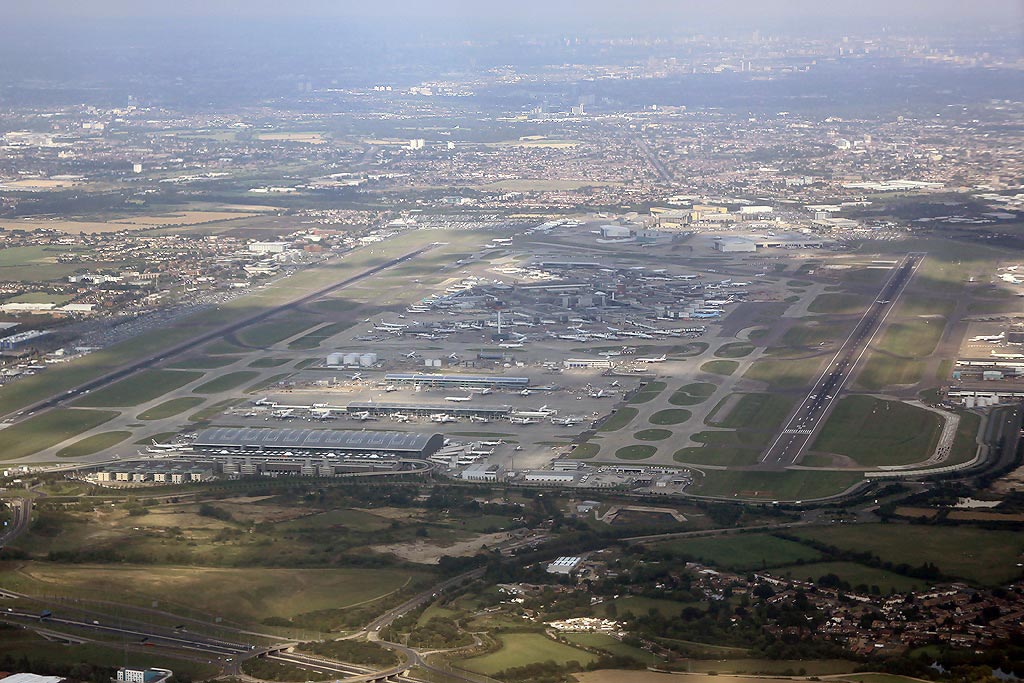
Europe’s busiest airport, Heathrow, is grappling with the aftermath of an unprecedented shutdown triggered by a massive fire at a nearby electrical substation late Thursday night, March 20. The blaze, which erupted in Hayes, West London, plunged the airport into darkness, halted operations for nearly 16 hours on Friday, and sent shockwaves through global air travel networks.
As of today, Sunday, March 23, power has been restored, and the airport is officially ‘fully operational,’ but the ripple effects of the closure continue to disrupt passengers, airlines, and the UK economy.
A fiery disruption
The crisis began just after 11 PM GMT on March 20, when a transformer at the North Hyde electrical substation caught fire. Fueled by 25,000 liters of cooling oil, the blaze proved difficult to extinguish, requiring 10 fire engines and 70 firefighters from the London Fire Brigade to bring it under control.
The substation, a critical power supplier to Heathrow, failed, cutting electricity to the airport and approximately 67,000 homes. Backup generators kicked in but were insufficient to sustain full operations, forcing Heathrow to close its doors until 5 PM GMT on Friday, March 21.
Heathrow’s CEO, Thomas Woldbye, described the outage as ‘unprecedented,’ noting that while contingency systems functioned as designed, they were not equipped to handle a power loss of this magnitude. ‘We lost power equivalent to a mid-sized city,’ he told Sky News, admitting that the airport’s reliance on a single external power source exposed a vulnerability.
Flights resume, but the backlog persists
Operations resumed late Friday with a limited schedule, prioritizing long-haul flights to reposition aircraft and crew. By Saturday, March 22, Heathrow was running at near-normal capacity, with extra staff facilitating an additional 10,000 passengers.
British Airways, the airport’s largest operator, reported that 90% of its Saturday flights departed as planned and anticipates a ‘near-full’ schedule today, Sunday, March 23. Virgin Atlantic and Air India echoed similar optimism, with the latter resuming regular flights after diverting aircraft to Frankfurt and Mumbai during the shutdown.
Yet, the recovery is far from complete.
Over 1,350 flights, carrying up to 291,000 passengers were disrupted on Friday alone, with planes diverted to airports across the UK and Europe or returned to their origins. Aviation experts estimate it could take up to four days to clear the backlog, leaving thousands of travelers stranded or rerouted.
Investigations and Accountability
The Metropolitan Police’s Counter-Terrorism Command is leading the investigation into the fire’s cause, given its impact on critical national infrastructure. As of Sunday, authorities have found ‘no indication of foul play,’ with the London Fire Brigade suggesting the blaze was likely a ‘catastrophic accident.’
Energy Secretary Ed Miliband has commissioned the National Energy System Operator (NESO) to conduct an urgent review, expected within six weeks, to assess grid resilience. Meanwhile, Heathrow’s board has tapped former Transport Secretary Ruth Kelly to spearhead an internal probe into the airport’s crisis management and contingency planning.
Critics, including Willie Walsh of the International Air Transport Association (IATA), have lambasted Heathrow’spreparedness. ‘How is it that critical infrastructure is fully dependent on a single power source without an alternative?’ Walsh asked, calling it a ‘clear planning failure.’ The UK government, through Transport Secretary Heidi Alexander, has acknowledged the incident was beyond Heathrow’s control but insists there are ‘questions to answer’ about systemic vulnerabilities.
The Fallout
The shutdown’s financial toll is staggering. Aviation consultant Paul Charles estimates a daily loss of £20 million ($26 million) to the sector, with broader impacts potentially reaching hundreds of millions of pounds, according to Singapore-based Endau Analytics.
Shares in airlines like British Airways’ parent company IAG, Lufthansa, and Qantas dropped sharply on Friday, reflecting investor unease. Heathrow, which handled 48% of UK air cargo in 2023, also saw freight operations grind to a halt, denting supply chains.
Public sentiment ranged from frustration to dark humor. Travelers recounted tales of diverted flights and hours-long queues, while some quipped about the eerie silence of a powerless Heathrow.
As Heathrow limps back to normalcy on March 23, the focus shifts to resilience. The UK Civil Aviation Authority has reminded affected travelers of their rights to refunds or alternative flights, with additional compensation possible under UK and EU regulations.